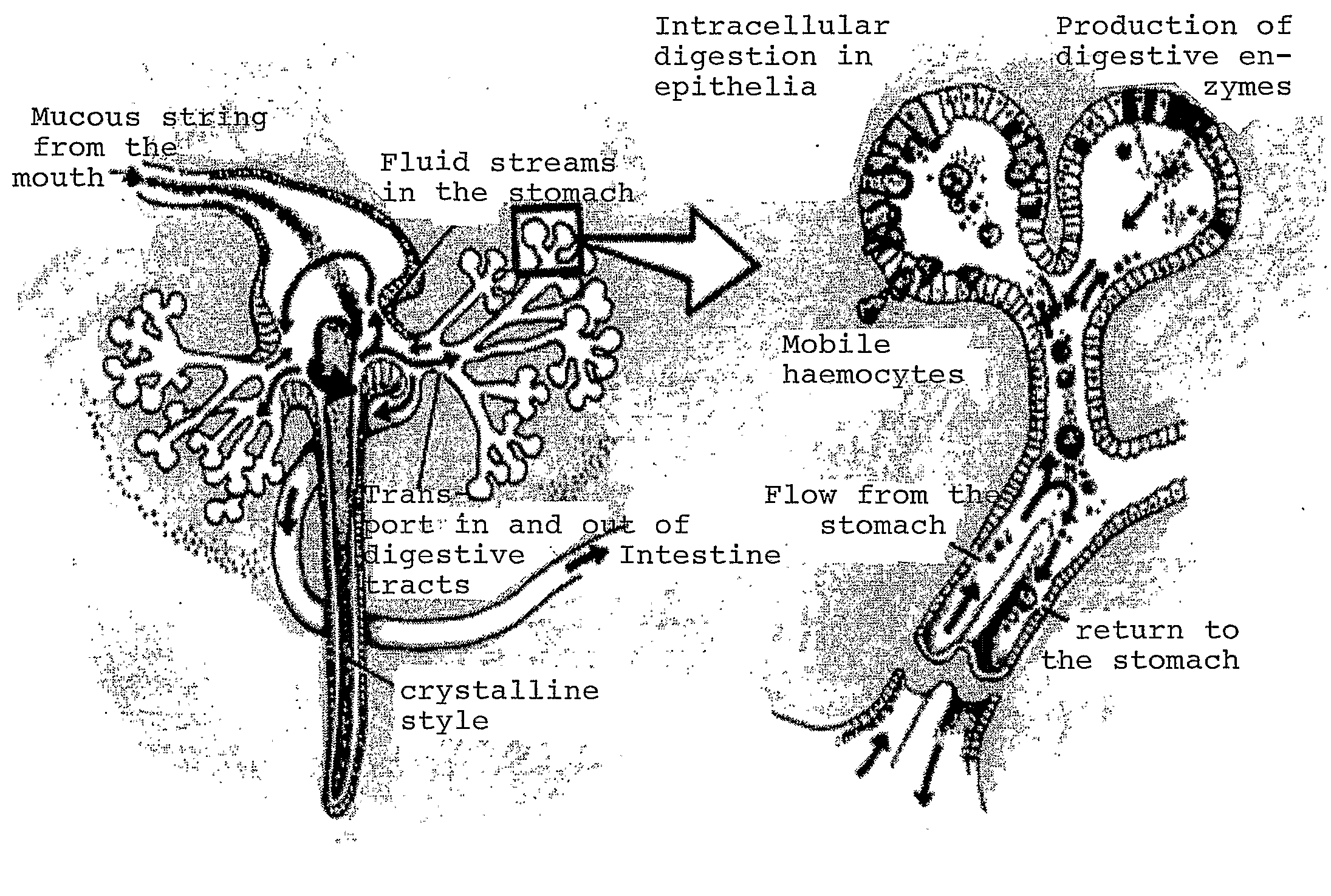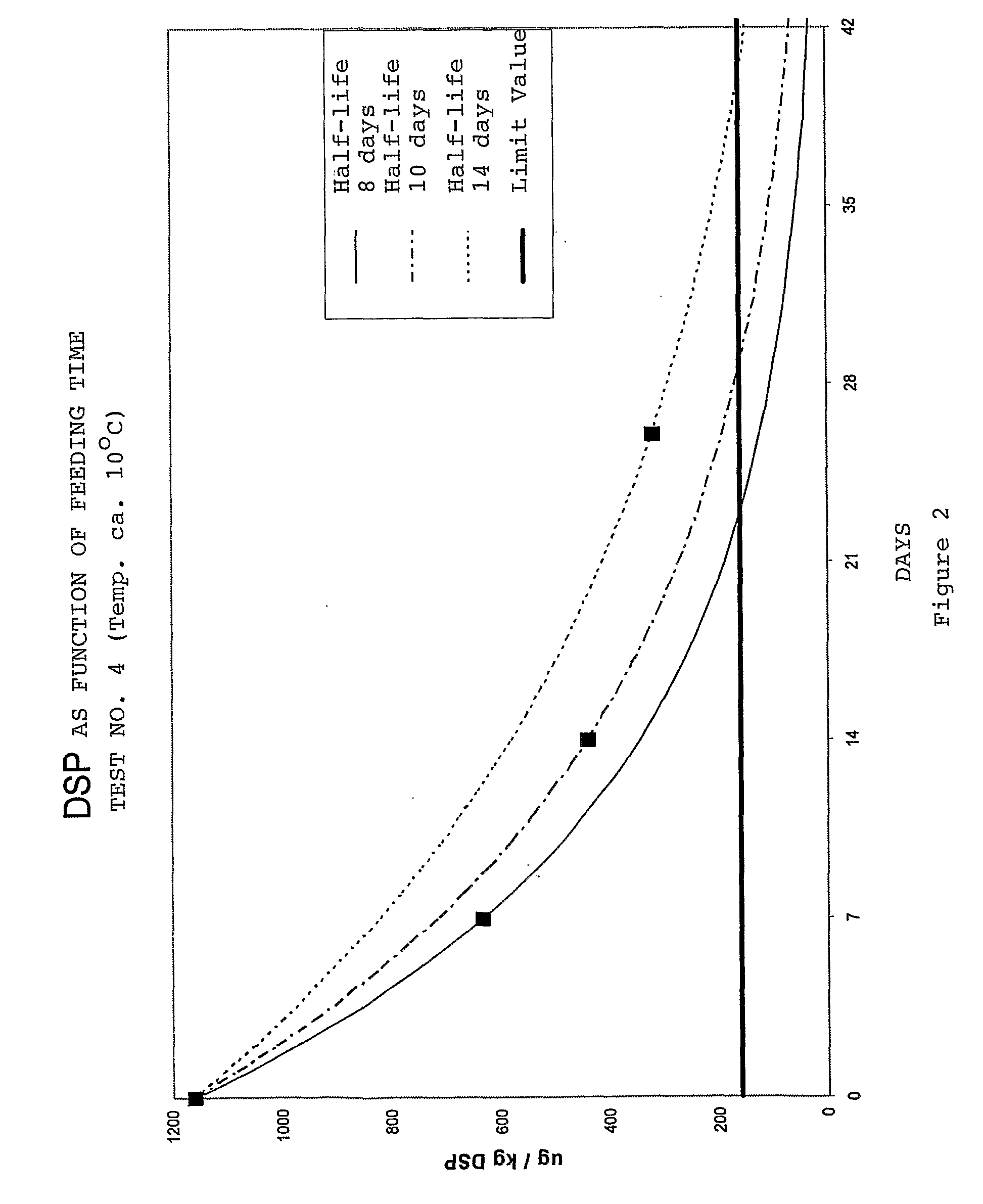Detoxification of Shellfish
a shellfish and detoxification technology, applied in the field of detoxification of bivalves and other shellfish, can solve the problems of bivalves not being harvested without a substantial loss of earnings, fat-soluble toxins, and major industry problems such as algal toxins in bivalves
- Summary
- Abstract
- Description
- Claims
- Application Information
AI Technical Summary
Benefits of technology
Problems solved by technology
Method used
Image
Examples
examples
Test Description
[0044]Seawater from a depth of 45 metres in the Eidfjord, with a salinity of 33-34 per mille, was pumped up into a reservoir on land. The water was then passed into the test vessels. The bivalves were evenly distributed on the mesh / grating in a layer of about 10 cm in thickness. The vessel diameter is about 70 cm. In these small scale tests importance was given to ensuring that oxygen should not be a limiting factor. That is to say that there is sufficient flow-through of water to obtain approximate oxygen saturation in the outflow. The amount of water through each vessel was about 8 litres per minute.
[0045]Feeding was effected automatically batchwise throughout the day. That is to say that the daily consumption of the feed slurry according to Example 1 was filled into a tank once a day. The slurry runs from this tank to the bivalve vessel cascade via a valve. In our tests we chose to feed batchwise once an hour. Such portion feeding is important in order to obtain a...
PUM
| Property | Measurement | Unit |
|---|---|---|
| Mass | aaaaa | aaaaa |
| Mass | aaaaa | aaaaa |
| Mass | aaaaa | aaaaa |
Abstract
Description
Claims
Application Information
 Login to View More
Login to View More - R&D
- Intellectual Property
- Life Sciences
- Materials
- Tech Scout
- Unparalleled Data Quality
- Higher Quality Content
- 60% Fewer Hallucinations
Browse by: Latest US Patents, China's latest patents, Technical Efficacy Thesaurus, Application Domain, Technology Topic, Popular Technical Reports.
© 2025 PatSnap. All rights reserved.Legal|Privacy policy|Modern Slavery Act Transparency Statement|Sitemap|About US| Contact US: help@patsnap.com



